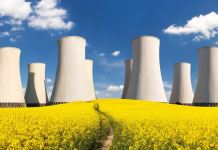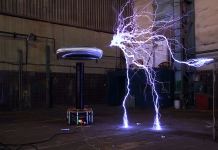Straw wood pellets – fuels made from agricultural waste. Straw as fuel began to be widely used in the 1980-ies. The straw that was not going to feed or as bedding for livestock were burned in the fields, but after the prohibition of its burning, began to think, how to use it. That’s when it began to be used as ecological fuel. The major advantage in this respect is the fact that incineration is the emission of CO2. Therefore, the use of straw does not affect the amount of greenhouse gases in the atmosphere. Straw pellets are mainly used in biogas plants of farms, as raw materials are here in abundance. Also used for local heating plants and large power plants. In the future, from straw to produce gas and bioethanol.
Straw for the production of energy comes in bales. Processing of bales into pellets before shipping to the plant, increases the cost, but greatly reduces the amount of straw which is transported away and makes it easy to use. Straw pellets has a 10 times higher calorific value than straw and raw materials.
Production of straw pellets is not difficult. It occurs in two stages. The first stage is crushing the straw. First, the straw is crushed to the size of 20-80 mm, then the raw materials enter the crusher and are crushed to small fractions, from which it produced pellets. The second stage is moisturizing, it is necessary to form granules as the dry raw material is less susceptible to granulation. At the exit of the pelletizer, the pellets are fragile and hot. Then they are sent to cooling section where they are cooling down, lose moisture and harden and become marketable. Next, the granules are packaged and received or deposited or sold.
Like any kind of fuel straw pellets have their advantages and disadvantages. The disadvantages include the fact that when you compare them with wood pellets, the ash content indicator exceeds. Although the presence of ash and does not have this drawback, you can use it instead of fertilizer, and given that this fuel is used mainly in private households, this drawback is easily solved. Also the disadvantages include the seasonality of raw materials. Although the consumer, this aspect is unimportant, for producers who need to have a supply of raw material all year round. This is the most optimal fuel for industrial boilers. But the advantages of straw pellets is much more. Grass pellets is an alternative source of energy. It has a lot of advantages over gas and electric boilers. The size of the granules enable the process of loading the fuel to make automatic. Storage of pellets is not necessary to equip the premises, because they are very resistant to moisture. And the density of them is much more of wood pellets, so the burning of straw pellets is much longer. Granules are well used not only as fuel and as bedding for animals and pellets made of straw the highest quality, used as a source of fiber in the cold season.
Based on the above it can be concluded that straw pellets is a highly efficient and environmentally friendly fuels. Stable parameters make it possible to precisely calculate the amount of ash formed in the combustion process, and what will be the quality and duration of burning.
Головна Straw wood pellets



















![[SCM]actwin,0,0,0,0;Ñîëîìåíûå ïåëëåòû â 2013 ãîäó: ñïðîñ åñòü - öåíû óïàëè](https://alternative-energy.com.ua/wp-content/uploads/2016/10/пеллеты-солома.jpg)



